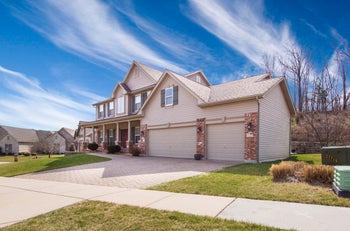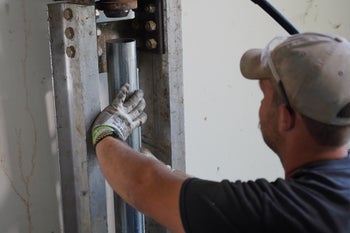Is It Safe To Live In A House With Foundation Problems?
Table of Contents
1. So, Is It Safe To Live In A House With Foundation Problems?
2. Total Foundation Failures Are Very Rare
3. What Foundation Problems Make A House Unsafe To Live In?
4. Differential Foundation Settlement Causes Most Foundation Problems
5. Signs A House Has Foundation Problems
6. How Are Foundation Problems Fixed?
7. How Long Do Foundation Repairs Take?
8. How Much Do Foundation Piers Cost?
9. Buying Or Selling A House With Foundation Problems
10. How To Prevent Foundation Problems
So, Is It Safe To Live In A House With Foundation Problems?
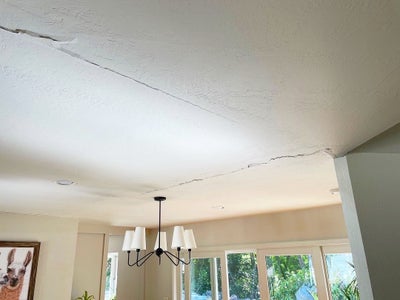
It’s hard to say without inspecting the house. However, many people live in houses with foundation problems without realizing it. Keep in mind that homes built properly are pretty sturdy. However, that doesn’t mean you should live in a house with foundation problems because foundation problems worsen over time.
The good news is that most foundation problems are repairable. However, all homeowners should be familiar with the warning signs of foundation trouble to catch issues early before they have a chance to turn into big structural problems.
In this article, we’re going to cover foundation settling, non-structural vs. structural foundation problems, signs your home might have a foundation issue, the cost of foundation repair, and finish up with some easy ways you can prevent foundation problems.
But, before we begin, we’d like to put your mind at ease by pointing out that…
Total Foundation Failures Are Very Rare
Fortunately, total foundation failures – where a substantial part of the structure collapses – don’t happen often. When they do, they’re usually caused by something catastrophic like an earthquake, a flood, or heavy excavation close to the foundation. However, that doesn’t mean that you should let a foundation problem fester. As we just mentioned, foundation problems worsen over time and will be more expensive to repair if you wait.
What Foundation Problems Make A House Unsafe To Live In?
Although it’s rarely the case that a foundation problem makes a home unsafe to live in, it does happen now and then, almost always due to catastrophic circumstances. If this happens, you’ll know about it.
Here are a few potentially unsafe situations:
- Foundation settling or sliding due to soil creep – In California, one potentially unsafe situation that usually isn’t related to a catastrophic event involves houses on hillsides that are settling and/or sliding due to soil creep. If you live in such a house and you spot signs of foundation trouble, you should contact a foundation repair contractor right away. Scroll down to the section Signs A House Has Foundation Problems for more information.
- Uneven floor – Another potentially unsafe situation is a sloped floor over a settled crawl space. The sloping can make furniture unsteady and create trip hazards.
- Foundation wall that’s bowed over 3/8 inch with a horizontal crack – If you have a basement foundation, a potentially unsafe situation would be a foundation wall built before the 1950s that doesn’t contain rebar, is bowed more than 3/8”, and has one or more large horizontal cracks. However, ultimately, the age of the house doesn’t matter. If you have a home of any age and you see large cracks with or without bowing, contact a foundation repair professional right away to have it checked out.

Fortunately, except for earthquakes, floods, or other catastrophic events, a foundation doesn’t fail overnight. Instead, there’s a process of slow destabilization that usually has to go on for quite some time before a total failure occurs. In other words, these homes weren’t perfectly fine one day and then condemned the next. Signs of foundation failure were either ignored or not recognized for an extended period.
Differential Foundation Settlement Causes Most Foundation Problems
Soil needs to be adequately compacted before construction begins. Soil that isn’t adequately compacted before construction can lead to differential settlement where the structure is settling into the ground, but not uniformly. (see the image below) Differential settlement puts tremendous stress on a foundation and will eventually lead to structural problems.
Problems with drainage are another cause of differential settlement. Houses built on soil that doesn’t drain well tend to have more foundation problems than houses built on other soil types. Expansive clay soil is particularly problematic because it swells considerably as it absorbs moisture and shrinks by that same amount when it dries out. This swelling-shrinking cycle is usually seasonal and will, over time, put a lot of stress on a foundation and eventually result in differential settlement and the foundation problems associated with it.
We have an entire article on Foundation Settlement. It’s essential reading for understanding foundation problems.
Signs A House Has Foundation Problems
Signs your home might have a foundation problem include,
- Uneven floors
- Windows and doors that are no longer easy to open and close
- Cracks in your floor, especially cracks that run wall to wall
- Ceilings and/or floors that have separated from walls
- Cracked walls, with or without bowing
- Torn wallpaper might indicate a cracked wall behind the wallpaper
- Wall rotation
- Diagonal cracks running from the corners of windows and doors up toward the ceiling
- Moldings that have separated from the wall and/or ceiling
- Stair step cracks in brickwork
- Chimneys and porches that are separating from the house
If you spot any of these signs, contact an experienced foundation repair professional right away.
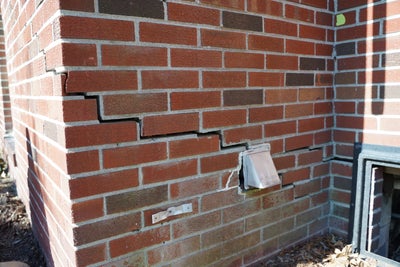
How Are Foundation Problems Fixed?
There are various ways to repair a foundation. The three most common foundation repair methods are:
Resistance piers (also called push piers)
Resistance piers are driven into the ground using hydraulic pressure along with the building’s weight. After they reach load-bearing soil, hydraulics jacks lift the house back up.
Helical piers
Helical piers get their name because they look like giant screws. They’re turned into the ground until they reach load-bearing soil. Once they’re in place, hydraulic jacks lift the building back up. Helical piers are generally used for new construction projects. However, we sometimes use them to repair an existing foundation.
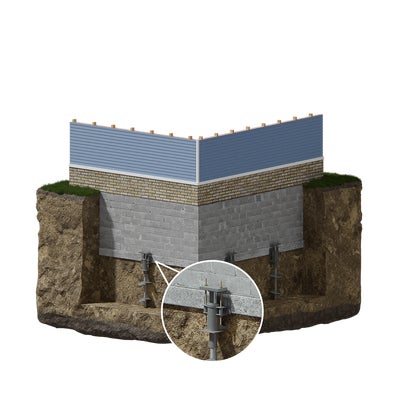
Drilled concrete piers
Drilled concrete piers stabilize hillside homes experiencing lateral movement due to soil creep. They’re drilled deep down into the bedrock and keep the foundation fixed in place.

How Long Do Foundation Repairs Take?
It depends on the type of repair, the size of the home, any weather-related influences, etc. However, it’s safe to say that it takes longer to stabilize a foundation using drilled concrete piers than it does to fix a non-structural wall crack. Generally, it takes less than a day to fix a non-structural wall crack, a few days to fix a bowed wall, and several days to a week for foundation underpinning using piers. However, it’s typically case by case. Our estimators and engineers can usually provide a better time frame after they do an inspection and evaluation.
How Much Do Foundation Piers Cost?
The cost to repair a house with foundation issues depends on where you live, the type and severity of the problem, and the chosen repair solution. Therefore, we can’t give you an estimate here in this article. Instead, you’ll need to contact an experienced foundation repair professional and have them come out for an inspection and then give you an estimate. The good news is that most contractors will do a home foundation inspection for free.
Because we know you’re wondering…
Your homeowner’s insurance probably won’t cover the cost of a foundation repair unless the problem was caused by a natural disaster for which your home is protected. Check with your insurance company to make sure.
Buying Or Selling A House With Foundation Problems
If you’re thinking of buying a house with foundation problems, be sure to have the property inspected by a foundation repair contractor and get an estimated repair cost. You can figure that into your offer.
If you’re trying to sell a house with foundation problems, check out our article How To Sell A House With Foundation Problems.
How To Prevent Foundation Problems
Since excess water in the soil around your home is behind most foundation issues, you can keep your home safe by ensuring any water that soaks into the ground has a way to drain off. You can,
- Keep your gutters free of debris – Clogged gutters can cause water to pour over the side of your house and soak into the soil next to the foundation.
- Install downspouts, if necessary – Downspouts that are too short dump water next to the foundation. Extensions channel the water away from the foundation.
- A properly graded yard slopes away from your foundation – If yours doesn’t, you may need to regrade it. Both landscapers and foundation repair contractors can help you with this. However, if you’re handy around the house, this might be an excellent DIY project.
- Install a bubbler pot – This is an underground downspout that carries excess water away from the foundation and into something like a mini sump pump. When the water reaches a certain level, the bubbler pot pops up and deposits the water a safe distance from your foundation.
- Exterior and/or interior drain tile system – Drain tile systems collect excess water in the soil and carry it away from the foundation.
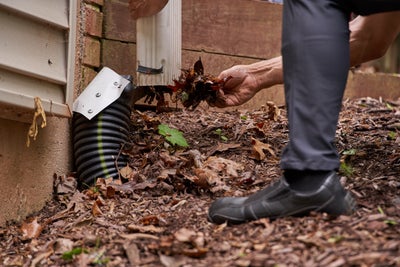
Most of the time, it’s safe to live in a house with foundation problems. However, because foundation issues worsen over time, you should have the problem fixed as soon as possible. Contact an experienced foundation repair professional in your area and ask them to come out for an inspection and estimate. Most will do a home foundation inspection for free without any obligation.
If you’re in our service area in Northern California, contact us today for a free inspection and estimate.
More Resources
Publish Date:
Last Modified Date:

Our Locations
2333 Courage Dr. Suite C
Fairfield, CA 94533
1161 N Fair Oaks Ave
Sunnyvale, CA 94089

